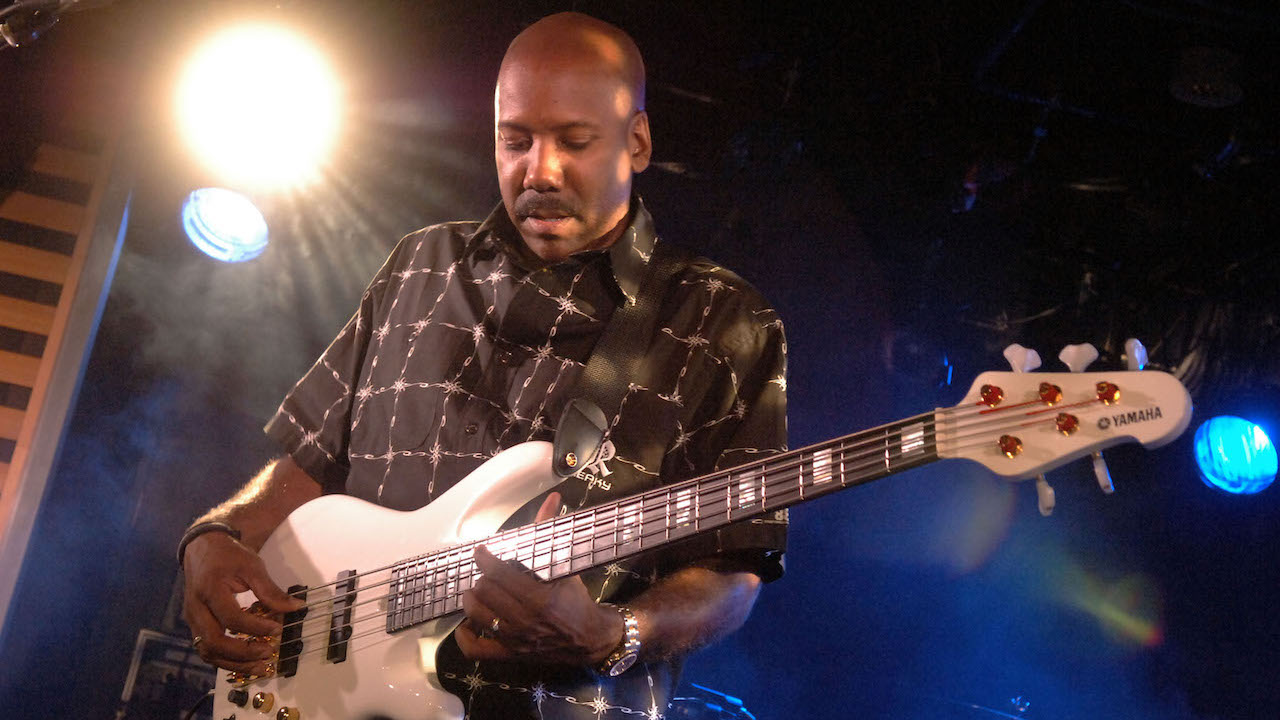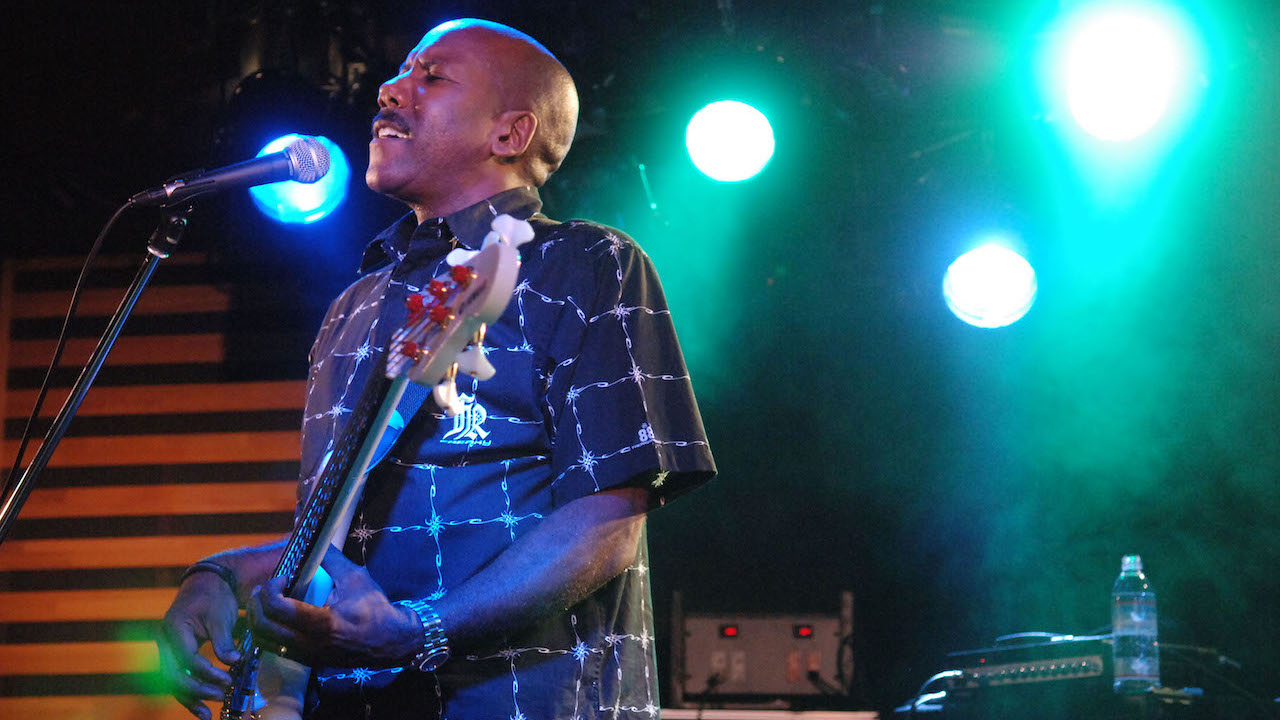“Bass players can solo through changes just like a horn player or a guitarist”: Watch Nathan East raise the bar as a soloist on Al Jarreau’s Our Love
Recorded live at Wembley Arena, Nathan East’s melodic 16-bar solo was played on a Yamaha BB3000 5-string

Nathan East has certainly done his part to uphold the strong groove tradition established by studio bassists – but he's also helped to raise the bar as a soloist. His undeniable flair for blues and bebop-drenched improvisation has led to his being given solos in unlikely places in various pop, rock, and R&B settings. A prime example is his classic solo on Our Love, from Al Jarreau's 1985 concert video Al Jarreau Live in London.
East's melodic 16-bar solo, coupled with frequent cable and PBS airings of the Live in London video, have since inspired many a band-leader to feature bass solos on pop ballads. “Al loved the offbeat nature of having the bass guitar play a solo in the middle of his ballad, so it became an established part of the show,” said East, who used a Yamaha BB3000 5-string.
“I knew we were recording both the Live in London album and the video that night, but I didn't plan anything for the solo; I just tried to be as tasteful as possible. This song has a lot of II-V chord changes, and I always like to let people know bass players can play through changes just like a horn player or a guitarist. If you listen to truly great soloists isolated from their accompaniment, you can hear the changes through the notes they play. I tried to keep that in mind.”
As the solo begins, East uses ascending and descending arpeggios to state his first theme; the lll-VI-II-V chord progression indicates an A major tonal center, which shifts to Gb major, and then to F# minor, before cycling back to A major. It’s East’s ability to smoothly connect these key centers with common tones that gives the solo its flow.
As the chords from the first eight bars repeat, East plays a repetitive three-note figure that he resolves before using a similar rhythmic motion to segue to the next tonal center. Here, the descending triplets feel almost like an exhaled breath before a rapid, ascending Bmaj7 arpeggio.
On the next pickup, East restates his original F#m7 theme; he uses slightly different notes, but the effect is the same. The slowed-down meter and high note choices serve to create the solo's climax. The solo ends on the held E, while East eases back into his bassline in preparation for the return of the lead vocal.

A key to East's overall melodicism is his preference for singing what he plays, either to himself or in a soft voice – a common device used by jazz soloists. “I always try to play from the heart, and singing is a natural connection. Your phrasing and melodies roll off the tip of your tongue when you sing. l would advise other bassists to do some practicing away from the bass; just sing and let it come from within. If you play only patterns on the neck, you’re never going to move the listener. To really move someone, you have to be moved yourself. Sincerity is everything. If you mean It, it works.”
Get The Pick Newsletter
All the latest guitar news, interviews, lessons, reviews, deals and more, direct to your inbox!
Chris Jisi was Contributing Editor, Senior Contributing Editor, and Editor In Chief on Bass Player 1989-2018. He is the author of Brave New Bass, a compilation of interviews with bass players like Marcus Miller, Flea, Will Lee, Tony Levin, Jeff Berlin, Les Claypool and more, and The Fretless Bass, with insight from over 25 masters including Tony Levin, Marcus Miller, Gary Willis, Richard Bona, Jimmy Haslip, and Percy Jones.
“I asked him to get me four bass strings because I only had a $29 guitar from Sears”: Bootsy Collins is one of the all-time bass greats, but he started out on guitar. Here’s the sole reason why he switched
“I got that bass for $50 off this coke dealer. I don’t know what Jaco did to it, but he totally messed up the insides!” How Cro-Mags’ Harley Flanagan went from buying a Jaco Pastorius bass on the street to fronting one of hardcore’s most influential bands

![John Mayer and Bob Weir [left] of Dead & Company photographed against a grey background. Mayer wears a blue overshirt and has his signature Silver Sky on his shoulder. Weir wears grey and a bolo tie.](https://cdn.mos.cms.futurecdn.net/C6niSAybzVCHoYcpJ8ZZgE.jpg)

![A black-and-white action shot of Sergeant Thunderhoof perform live: [from left] Mark Sayer, Dan Flitcroft, Jim Camp and Josh Gallop](https://cdn.mos.cms.futurecdn.net/am3UhJbsxAE239XRRZ8zC8.jpg)







